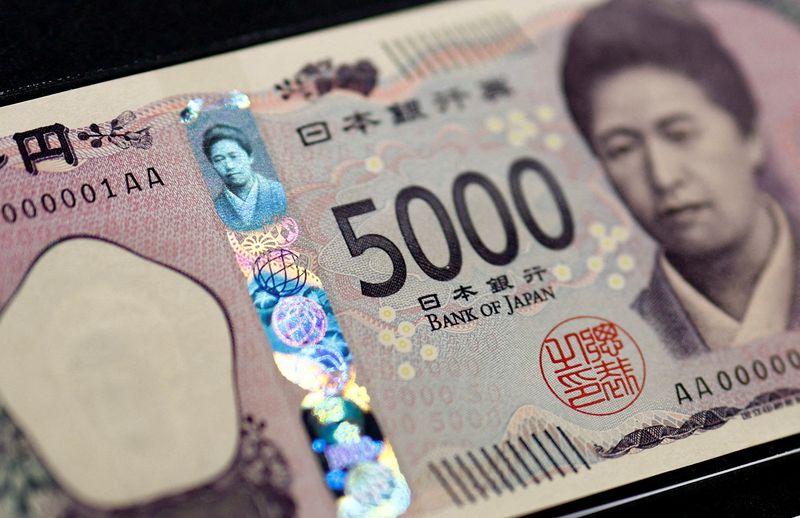Forex
Dollar drops against yen but broadly stable after last week’s decline

By Kevin Buckland and Sruthi Shankar
TOKYO (Reuters) – The dollar fell to a three-week low against the yen on Monday but halted its recent slide against most other currencies as investors weighed the prospect of the Federal Reserve soon starting on a series of interest rate cuts.
The dollar slumped as much 0.7% to 143.45 yen, its weakest level since Aug. 5, and was last trading down 0.2%.
Against the euro and sterling, the greenback firmed slightly after having touched new multi-month lows on Friday when Fed Chair Jerome Powell endorsed an imminent start to interest rate cuts.
Traders were also keeping an eye on the fallout from escalating tensions in the Middle East that lifted oil prices by almost 3%. [O/R]
In a much-anticipated speech at the annual economic conference in Jackson Hole, Wyoming, Powell said “the time has come for policy to adjust,” prompting traders to seal bets of a 25 basis point (bps) rate cut in September and even boost their expectations of a super-sized 50 bps rate cut.
“Powell did not say anything new but officially validated some of the things that markets were pricing in, including the idea of a (rate) cut, shift of focus from inflation to labour market,” said Samy Chaar, chief economist at Lombard Odier in Geneva.
However, he did not see the dollar falling much more in the short term.
“Huge dollar weakness from here would mean that the market is not pricing in enough cuts which I feel is a bit of an exaggeration,” Chaar added.
The – which measures the currency against a basket of six major peers – edged up to 100.82, coming off the 13-month low of 100.60 reached at the end of last week. Trading activity was expected to be lighter than usual, with UK markets closed for a public holiday.
YEN STILL FIRM
Helping the yen strengthen, Bank of Japan chief Kazuo Ueda reaffirmed on Friday his resolve to raise interest rates if inflation stayed on course to sustainably hit the 2% target.
Many market participants expected Ueda to strike a less hawkish tone in a special session of parliament, which was called amid criticism the BOJ’s surprise hike last month helped spark a rapid unwind of bearish yen bets and an aggressive sell-off of Japanese stocks.
The U.S. currency hovered near its lowest in 13 months against the euro, and was closer to levels last seen in March 2022 versus sterling, with Bank of England head Andrew Bailey’s comments that it was “too early to declare victory” over inflation signalling a less aggressive stance on interest rate cuts than the Fed.
Sterling eased 0.2% to $1.3190 after jumping as high as $1.32295 on Friday for the first time in 17 months.
Sources told Reuters that ECB policymakers are lining up behind another rate cut on Sept. 12. The euro slipped 0.2% to $1.1167, but not far from its session high of $1.1205, a level last seen in July of last year.

The Swiss franc edged up to 0.8475 per dollar, its strongest level since Aug. 5.
Elsewhere, the Australian dollar retreated 0.4% to $0.6768, but remained not far from Friday’s peak of $0.6799, the highest level since July 11.

 Forex3 years ago
Forex3 years agoForex Today: the dollar is gaining strength amid gloomy sentiment at the start of the Fed’s week

 Forex3 years ago
Forex3 years agoUnbiased review of Pocket Option broker

 Forex3 years ago
Forex3 years agoDollar to pound sterling exchange rate today: Pound plummeted to its lowest since 1985

 Forex3 years ago
Forex3 years agoHow is the Australian dollar doing today?

 Cryptocurrency3 years ago
Cryptocurrency3 years agoWhat happened in the crypto market – current events today

 World3 years ago
World3 years agoWhy are modern video games an art form?

 Commodities3 years ago
Commodities3 years agoCopper continues to fall in price on expectations of lower demand in China

 Economy3 years ago
Economy3 years agoCrude oil tankers double in price due to EU anti-Russian sanctions



























